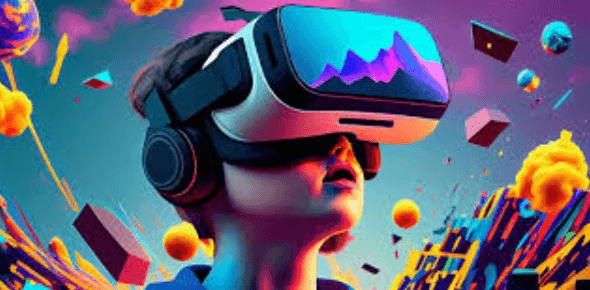Ways Immersive Experiences Are Changing the Entertainment Industry and Beyond

Immersive experiences are revolutionizing how we engage with art, technology, and each other. Blurring the lines between reality and imagination, these technologies transform passive viewers into active participants. From virtual reality adventures to augmented experiences in daily life, immersive tech is reshaping entertainment and extending its reach into education, tourism, retail, and more. Explore how this innovation is crafting unforgettable moments and creating new possibilities in storytelling, engagement, and beyond!
History of Immersive Experiences in Entertainment
The history of immersive experiences in entertainment has been remarkable over the years. It began in the mid-20th century with early efforts to enhance viewer engagement, such as 3D films that added depth to the viewing experience. A key milestone came in the 1950s with the advent of Cinerama, which utilized multiple projectors for a panoramic effect, laying the foundation for future immersive technologies.
In the 1990s, virtual reality (VR) started to gain traction with devices like Sega’s VR headset, despite facing technical challenges and skepticism. While VR did not become mainstream at the time, it sparked curiosity about creating fully immersive experiences.
The 2000s marked a shift with the emergence of interactive video games, such as Half-Life and Halo, which pushed storytelling forward by incorporating innovative gameplay mechanics. These games broadened how players engaged with virtual worlds, paving the way for future advancements in immersive media.
With the progress of technology, particularly the rise of smartphones and high-speed internet, augmented reality (AR) and VR technologies reached maturity. This facilitated a surge in immersive entertainment experiences, with AR and VR becoming integral to gaming, live events, theme parks, and interactive media. Today, these technologies continue to evolve, offering audiences increasingly immersive and realistic experiences.
Types of Immersive Experiences (Virtual Reality, Augmented Reality, Mixed Reality)
Immersive experiences are revolutionizing the entertainment industry by integrating traditional formats with advanced technology, leading to more engaging and interactive environments:
- Interactive Films: Virtual reality (VR) enables viewers to immerse themselves in films, interact with characters, and influence storylines in real time. This shifts the experience from passive viewing to active participation, creating deeper engagement and changing how narratives evolve.
- Gaming Evolution: Immersive gaming takes interactivity to new heights, allowing players to inhabit expansive, dynamic worlds that respond to their actions. This heightened level of immersion enhances enjoyment and forges stronger emotional connections with the game’s storyline.
- Augmented Reality in Live Events: Augmented reality (AR) enriches live performances and sports events by overlaying digital elements onto the physical space. These enhancements create a more personalized and captivating experience without overshadowing the main event.
As immersive technologies evolve, they are transforming the creation and consumption of entertainment, making immersion a central aspect of how audiences engage with content.
Potential Applications in Other Industries (Education, Healthcare, Marketing)
Immersive technologies are transforming several industries by offering innovative solutions and experiences:
- Education: Virtual reality (VR) is revolutionizing education by enabling experiential learning. It allows students to virtually visit historical events, explore distant locations, or engage with complex scientific concepts. This immersive approach enhances both understanding and retention of information.
- Healthcare: In healthcare, immersive technologies are making significant strides. VR simulations help medical professionals practice surgeries and procedures in a risk-free environment, improving training. Additionally, VR is used for pain management and rehabilitation, providing patients with new and effective therapeutic solutions.
- Marketing: Augmented reality (AR) is reshaping marketing strategies by offering interactive campaigns that engage consumers in unique ways. Brands use AR for virtual try-ons, allowing customers to experience products before purchase, which not only boosts sales but also provides a more personalized and immersive shopping experience.
These applications highlight the transformative power of immersive experiences, driving innovation and reshaping industries from education and healthcare to marketing and beyond.
Challenges and Ethical Concerns Surrounding Immersive Experiences
- Addiction: Immersive experiences, with their highly engaging environments, may lead to users becoming overly immersed in virtual worlds, potentially causing addiction and detachment from reality. This raises concerns about how much time should be spent in these digital spaces.
- Privacy: Many immersive platforms collect a vast amount of personal data to create personalized experiences. This raises significant privacy concerns, particularly regarding how this data is used, stored, and protected, as well as the risk of data breaches.
- Accessibility: Not everyone has access to the advanced technology required for immersive experiences, such as high-end VR/AR devices. This can create inequalities, limiting who can enjoy or benefit from these innovations.
- Ethical Content: The content of immersive experiences, such as virtual violence or sensitive themes, may have unintended societal consequences. The potential for these experiences to affect behavior or perceptions in real life raises ethical concerns about what is appropriate for users, particularly vulnerable groups.
- Emotional Well-Being: Immersive environments can evoke intense emotional reactions. Some individuals may not be emotionally prepared for these experiences, leading to potential negative impacts on mental health. This highlights the importance of responsible design and careful moderation to ensure a balanced, safe experience for all users.
These challenges emphasize the need for ethical considerations and thoughtful development in the immersive experience industry to ensure its benefits outweigh its risks.
The Future of Immersive Experiences: Where Do We Go From Here?
The future of immersive experiences is full of potential, with technology continuing to blur the lines between the physical and digital worlds. We can expect more advanced virtual environments that respond seamlessly to human interactions, allowing for smooth transitions between real and digital spaces, which will enhance storytelling and creativity.
Artificial intelligence will also play a key role in creating personalized experiences, adapting content based on individual preferences, reactions, and choices, and transforming how we engage with media.
Accessibility will be crucial, as efforts must be made to ensure these technologies are available to diverse audiences around the globe, preventing anyone from being left out of the immersive revolution.
From mixed reality entertainment in venues to augmented reality in education, the possibilities for innovation are growing every day. The future isn’t just about what’s next; it’s about how we collectively shape this exciting evolution.
Read also: Aviation Problem No Fast Tech Solution
Conclusion
Transformative immersive experiences are revolutionizing the entertainment industry, providing novel ways to connect with both the digital and physical realms. Immersive experiences have evolved from early 3D cinema and Cinerama to advanced VR, AR, and MR technologies.
These innovations are reshaping not only entertainment but also sectors like education, healthcare, and marketing. These cutting-edge technologies offer a wide range of possibilities, including interactive films and games as well as virtual education and tailored marketing initiatives.
Nonetheless, certain challenges such as addiction, privacy concerns, accessibility barriers, and ethical considerations must be carefully navigated to ensure responsible growth within this sector. As technology continues to push boundaries, the potential for more seamless and personalized immersive experiences only grows.
The future of immersive experiences lies in balancing accessibility with ethical guidelines, offering the potential to transform how we interact with content, learn, and engage with the world.





